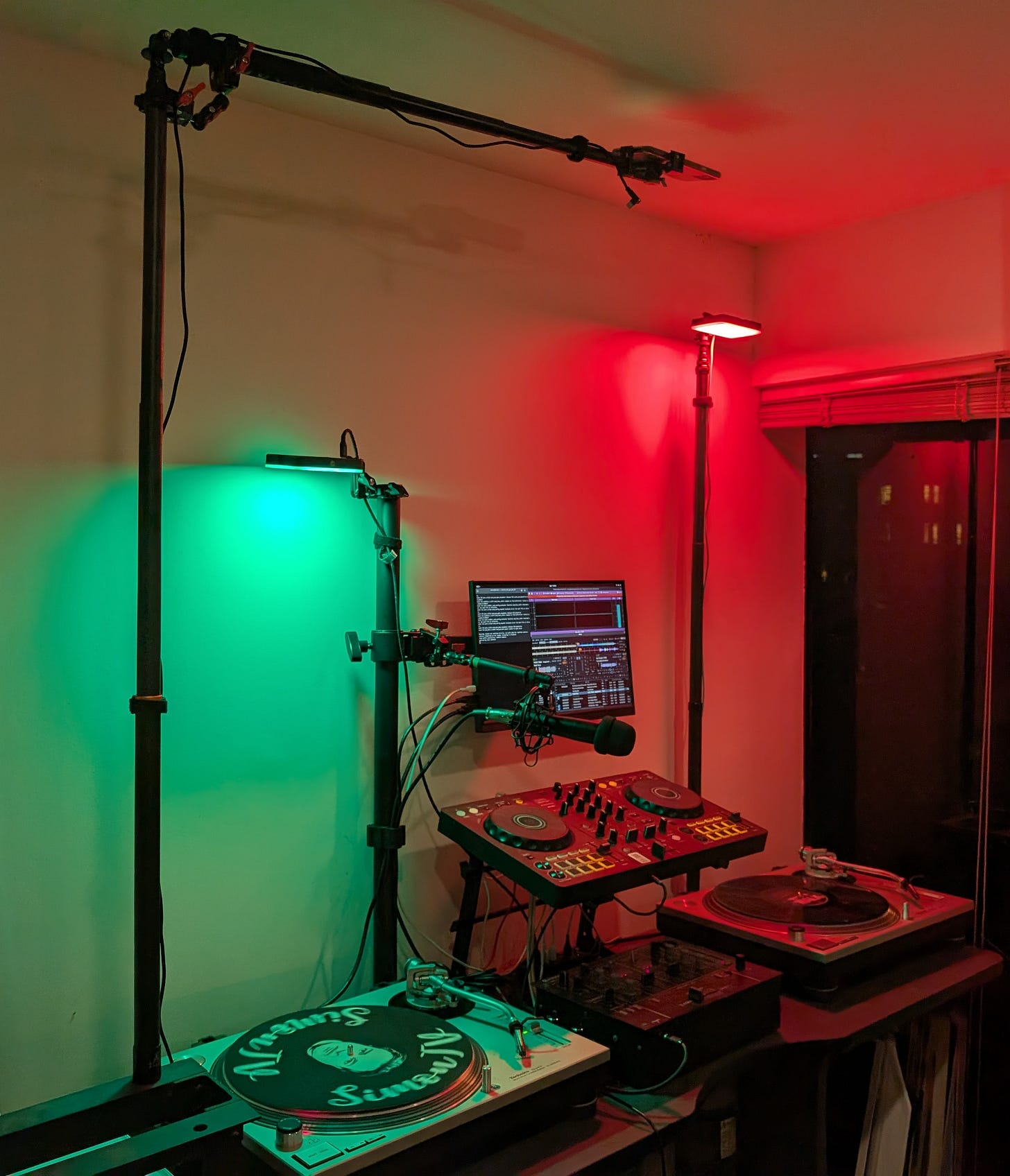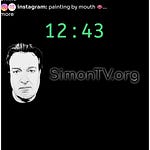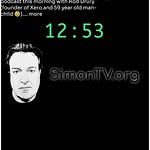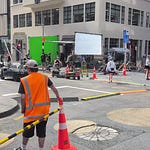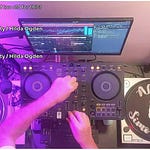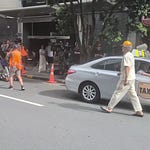I’ve been documenting my journey into Digital DJing here, here and here, and I’ve reached a point where I can perform fairly confidently.
It’s been a thoroughly enjoyable adventure. Integrating digital music with an existing analogue set up takes some doing, and integrating it with live Internet broadcasting adds another layer of complexity. When I commenced I thought I could simply slap in a digital controller and be good to go. How wrong I was! I’ve essentially built an entirely new set, separate from the set I use for the SimonTV LIVE podcast that goes out on Sunday evenings.
I’ve been mucking about doing Sample Simon test broadcasts for a few weeks and people tuning in have been wonderful offering advice as I’ve developed the solution. On Saturday afternoon I got to the point of “dress rehearsal” which you can check out here.
There are always further tweaks to be made though I must say I am astonished at what is possible with digital music: there are so many useful tools and handy features to explore. Tonight was a good example, a part of which I’ve captured in the video clip above. It’s a one-minute transition between two songs:
Left side: Sandy Rivera featuring LT Brown ‘Come Into My Room’ (Take It Back Mix)
Right side: Late Replies - Hold Up
Here’s what you’re looking at. As the left hand side on the digital mixer reaches the outro I’m queuing a vinyl record through the analogue mixer. Knowing I don’t have time I switch the headphones to the digital mixer and hit the start on the right hand side track which is already beat matched. As soon as I hear I think they’re going to work together I cross fade the track to halfway so they’re both playing.
Watch my thumb as the transition occurs. The music is a 4/4 signature and I’m cutting across for 1 and 2. The cross fader is moving from the mid position (both tracks playing simultaneously) on 3 & 4 to the right (right side only) for 1 & 2, before sliding across all the way to complete the transition after a few bars. A digital interface makes this easy: stumbling upon a nice transition accidentally when you’re just mucking about.
It gets better. My purpose this evening was to improve the sound, which isn’t simple. The character of the analogue sound from my turntables is different to the sound emanating from the digital components. I can adjust this, and was endeavouring to alter the Thimeo signal processing tool to do so. This is trial-and-error, as I alter aspects of the output during the broadcast then listen to the recording of what the audience actually heard in post-production.
I inspect the recording with analytical tools, one of which is the little box insert in the top left-hand corner of the video. This is the Sonic Visualiser open source tool showing me the spectrum and wave form of the recording. Comparing the analysis of a vinyl record with a digital song, and remembering how I had the settings during the broadcast is how I plan to ensure the character of the music between the input sources matches as closely as I can manage to get it.
There is more to do. The camera is about a second ahead of the music (I manually aligned it to make this clip.) Sometimes the software I’m using to write the artist and title of the track on screen guesses incorrectly. Mixing from analogue to digital is difficult because of the timing delay between the output and my headphones caused by the signal processing.
But boy am I having fun. Learning as I go problem solving, playing with the toys.
-SRA. Auckland, 7/iv 2025.



